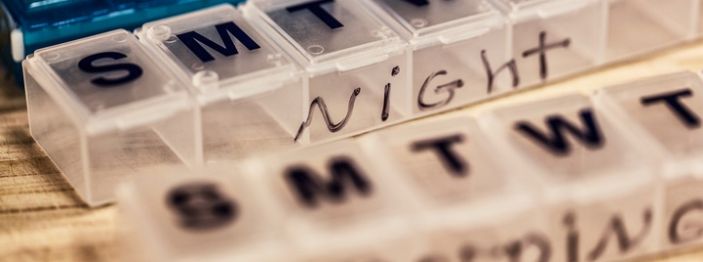Why dosing matters
It isn’t always easy to know if the medication you take for your multiple sclerosis is working as it should. MS drugs aren’t meant to relieve symptoms, such as relapses, pain or bladder symptoms, so you don’t feel an immediate benefit. MS drugs are used to control an underlying disease process – the abnormal activation of your immune system, which results in inflammatory lesions in the central nervous system (brain, spinal cord and optic nerve) and produces symptoms.
Over time, you may notice that you are having few or no relapses. But the actual goal of this kind of chronic therapy is to reduce the damage being caused to nerve fibres, and prevent the development of disability. So the delayed gratifications of therapy are the benefits of a road not taken – what you have avoided in the future, rather than what you are experiencing today.
One way of seeing that other road is to look at what happens when a drug isn’t taken properly. For a drug to work, it needs to be taken as prescribed by your doctor. How often you need to take a medication will depend on how that drug works. One drug (Tecfidera) is short-acting, so it needs to be taken twice a day. Some (e.g. Copaxone, Aubagio, Gilenya) should be taken once a day. Interferons (Rebif, Betaseron, Avonex) need to be taken one or more times a week. And some drugs are longer-acting, such as Plegridy (every 2 weeks), Tysabri (once a month), Ocrevus (2-3 times per year), Mavenclad (two weeks of treatment per year) and Lemtrada (one week of treatment a year).
The dose used is what’s needed for the drug to work, so a lower dose would be expected to less effective. Several studies of different MS medications have shown this in various ways. For example, early studies of Tecfidera found that taking it once a day (120 mg) wasn’t effective; a higher dose (240 mg) taken twice-daily was needed (Kappos and colleagues. Lancet 2008;372:1463-1472). To reduce the risk of side effects, doctors will start with a lower dose (120 mg twice-daily) before increasing to the effective dose (240 mg twice-daily) after a week or two. Unfortunately, studies have found that about 50% of people don’t start the higher dose for several months (Nazareth and colleagues. BMC Neurology 2016;16:187), which means that for a considerable time they aren’t receiving the full benefit of this treatment.
Gilenya provides another case in point. This medication needs to be taken every day to be effective. A recent study compared a daily dose with a dose taken every other day (so taking half a dose) (Zecca and colleagues. Mult Scler 2018;24:167-174). The half-dosers were three times more likely to have a relapse, and were more at risk of developing new plaques on their MRI. So these findings underscore the importance of keeping to the schedule and taking Gilenya every day.
Do persistence and patience pay off? The PRISMS-15 study looked at this in people taking Rebif over a 15-year period (Kappos and colleagues. J Neurol Neurosurg Psychiatry 2015;86:1202-1207). The researchers compared people with most exposure to the medication (i.e. fewest missed doses) versus those with the least exposure (because they skipped doses, took drug ‘holidays’, etc.). After 15 years, people with the least drug exposure were about 4-fold more likely to need a cane (52% compared to 14%), and about twice as likely to have worsened to progressive MS (52% versus 21%). While these long-term studies have their shortcomings, the results do suggest that there’s an ongoing, cumulative benefit – if you start a medication and keep with it over the many years ahead.
Share this article
Facebook Twitter pin it! Email
Related Posts
Back





